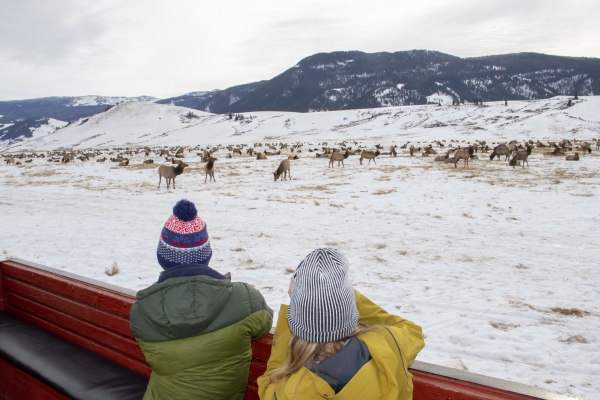
Lacreek NWR offers excellent opportunities for wildlife observation and photography. Abundant habitat, water in an arid landscape, and light visitation provides an opportunity for a good sighting around every corner throughout the year. During the winter, large concentrations of trumpeter swans, Canada geese, and mallards can be found utilizing the open water provided by the spring flows and the natural foods grown in the wetlands during the growing season. Many visitors are surprised to find large numbers of waterfowl remain, when the rest of the northern Great Plains has completely frozen over. Large numbers of migratory birds return in the spring on their migration north. Some stay to nest here, including blue winged teal, mallards, American white pelicans, great blue herons, snowy egrets, long-billed curlews, burrowing owls, short-eared owls, northern harriers and bobolinks to name a few.
During the heat of the summer, most wildlife restricts their activities to the cooler morning and evening hours. Listen for dickcissels, grasshopper sparrows, and lark sparrows calling in the grasslands. You might find an American bittern, great blue heron, or black crowned night heron slowly hunting the shallows looking for a wetland meal. As summer fades into fall, shorebirds, raptors, waterfowl, and other species of birds begin their migration south. Many stop in at the Refuge to spend a day or a month. Some will spend the winter here.
The entire Refuge is open to wildlife observation and photography. A few developed roads and trails exist, and you can often spot wildlife by driving the auto tour route slowly or taking a quiet walk on one of the designated trails. For visitors interested in exploring the rest of the Refuge, a number of Refuge dikes used to control water levels provide great opportunities for hiking. Vehicles are restricted to the designated roads. For more information about wildlife observation opportunities at Lacreek NWR, please contact the Refuge.
The Refuge is home to 39 identified mammal species including coyote, weasel, prairie dog, badger, mink, beaver, white-tailed and mule deer and antelope.
Auto Tour Route: A popular component of our public use program is a four and one half mile auto tour route that originates at the visitor center. You are welcome to explore places of interest on foot. Large numbers of trumpeter swans and other waterfowl may be observed from October through March. You will also likely see white tailed deer, ring necked pheasants, and many other species depending on the time of year.
The main Refuge road from Headquarters to the northeast entrance also passes several wildlife observation hotspots, including a large prairie dog town, the pelican nesting islands, and two of the Refuge's largest wetlands. The Refuge roads that travel to the Trout Ponds and the west side of the Refuge to the Brown Ranch are open to public travel and provide additional opportunities for wildlife viewing from a vehicle.
All of these roads are gravel and the conditions for travel deteriorate quickly after rainfall or snowmelt events. Check with Refuge Headquarters if in doubt of the road conditions.
Walking Trails: The Pelican Island Trail is located 2.5 miles north of the visitor center. The trail is a short (0.35 miles) easy hike. This walking trail provides visitors with the rare opportunity to view American white pelicans nesting on two islands within Pool 9 on the Refuge. During late April and early May, visitors will see thousands of white pelicans located on these islands. There are great blue heron, snowy and cattle egret, double-crested cormorant, and black crowned night heron rookeries on the islands as well. By late August, all of the young will have fledged and moved on. In addition, visitors will likely see many different species of waterfowl, shorebirds and other birds, both resident and migrants in season.
The Bird Trail starts at Headquarters and makes an easy 0.25-mile loop around the display pond. Large willows, cottonwoods, and other shrubs often provides the opportunity to observe warblers and other bird species not commonly found in our grasslands and wetlands.



